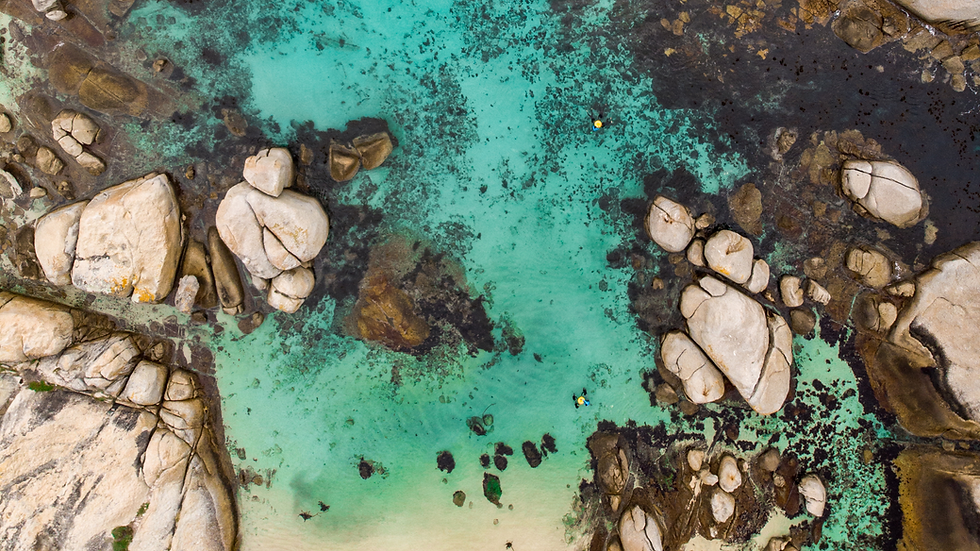The Southern Right Whale: A Migratory Marvel
- IAmWaterFoundation

- Jul 6, 2023
- 2 min read
The southern right whale (Eubalaena australis) is a species of baleen whale known for their massive size and distinctive callosities (like rough calluses) on their heads. Every year these beautiful whales undertake an incredible migratory journey.
The migratory patterns of southern right whales are closely tied to their breeding and feeding habits. These magnificent creatures are known to travel long distances in search of optimal conditions for both activities. South Africa, with its rich marine ecosystem and abundance of krill, provides the perfect environment for these whales. The southern right whale migration in South Africa typically begins around May when they leave the cold waters of Antarctica and head north towards warmer breeding grounds. The specific timing may vary slightly from year to year.
The journey from Antarctica to South Africa is no easy feat, spanning thousands of kilometres. However, the southern right whales are well-equipped for this arduous journey. They have a streamlined body that allows them to swim efficiently and conserve energy during their long migrations. Additionally, they possess a thick layer of blubber that helps insulate them from the icy waters.
One of the fascinating aspects of the southern right whale migration is their loyalty to specific breeding grounds. In South Africa, the De Hoop Nature Reserve and Walker Bay are two renowned hotspots for southern right whale calving and mating. These areas offer sheltered bays with shallow waters, which are ideal for nursing calves and courtship displays.
The arrival of southern right whales in South Africa is a spectacle to behold. The males are often the first to arrive, eagerly seeking out potential mates. They engage in elaborate courtship rituals, breaching, tail-slapping, and trumpeting to attract female attention. Once a female is chosen, the pair forms a bond that can last for several seasons. The calving season typically occurs from June to November, with peak activity in August and September. The newborn calves, weighing around one tonne at birth, are born tail-first and are immediately able to swim alongside their mothers. These early days are crucial for the calf's development, as they gain strength and learn vital survival skills from their mothers.
After giving birth and completing the breeding season, the southern right whales begin their journey back to Antarctica. The return migration is often less eventful, as the whales focus on feeding and replenishing their energy reserves. They rely on the rich reserves of krill and copepods found in the Southern Ocean to fuel their long journey.
The migratory patterns of southern right whales offer a glimpse into the remarkable lives of these marine mammals. Their annual migration to the coast of South Africa showcases their adaptability and their affinity for specific breeding and feeding grounds. It also highlights the importance of conservation efforts to protect these magnificent creatures and their habitats.
Whale watching in South Africa not only provides an awe-inspiring experience for visitors but also contributes to ongoing research and conservation initiatives while stimulating the country's economy. By observing and studying the migratory patterns of southern right whales, scientists can gain valuable insights into their behaviour, population dynamics, and the health of their habitats.
Photographs taken by Tim Wells.



















Comments